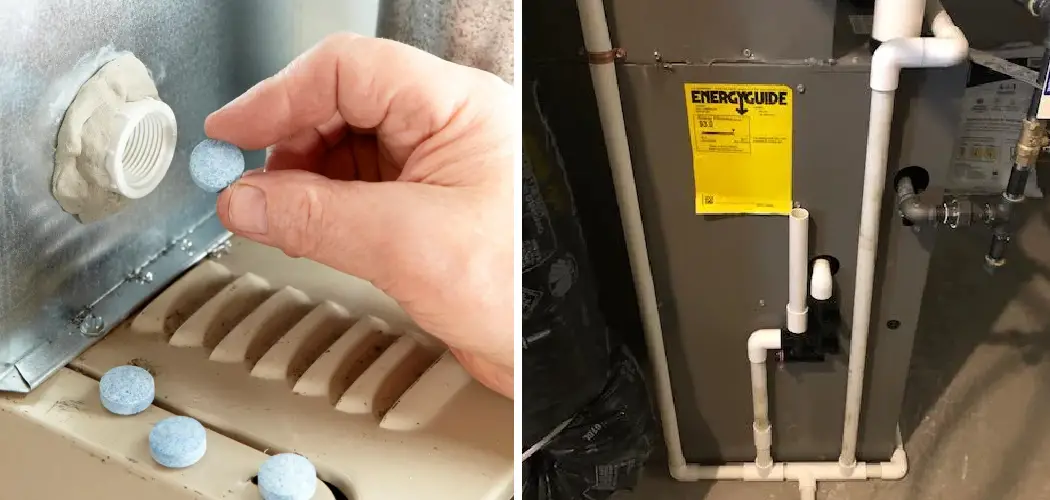Are you experiencing a clogged furnace drain? If so, you’re not alone. This can be a frustrating problem, especially during the colder months when you rely on your furnace to keep your home warm and cozy.
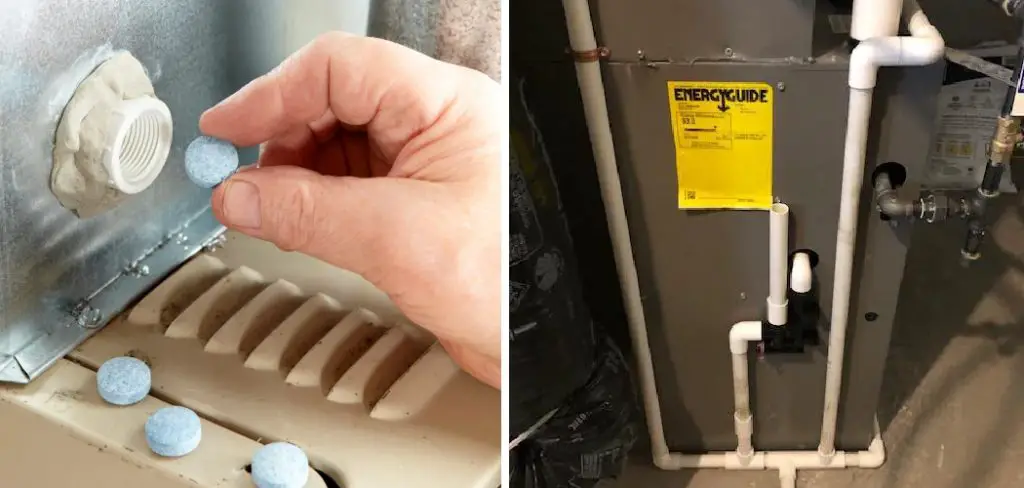
When the cold weather hits, the last thing you want to deal with is a malfunctioning furnace. A common yet often overlooked issue is a clogged furnace drain. Such blockages can lead to water backup, causing potential damage to your system and reducing its efficiency. Fortunately, unclogging a furnace drain is a task that most homeowners can undertake with some guidance.
This article on how to unclog a furnace drain will walk you through the necessary steps to identify, assess, and resolve blockages in your furnace drain, ensuring your heating system runs smoothly throughout the colder months.
What are the Reasons for a Clogged Furnace Drain?
Before we dive into the steps, it’s essential to understand why this issue occurs in the first place. Here are some common reasons that can lead to a clogged furnace drain:
- Dirt and Debris Buildup: Over time, dirt, dust, and other debris can accumulate in your furnace system, causing clogs in the drain.
- Algae Growth: The presence of moisture and organic matter in your furnace system can create a suitable environment for algae to grow, leading to blockages in the drain.
- Frozen Condensate Line: During particularly cold weather, your furnace’s condensate line may freeze, resulting in water backup and a clogged drain.
Understanding the possible causes of a clogged furnace drain can help you take preventative measures to avoid this issue in the future. Now, let’s move on to the steps for unclogging your furnace drain.
What Will You Need?
To unclog your furnace drain, you will need the following supplies:
- A bucket or container to collect any water that may spill during the process.
- A wet/dry vacuum cleaner with a narrow attachment.
- White vinegar or bleach.
- Warm water.
- Rubber gloves.
Once you have gathered these supplies, you can now proceed with the steps to unclog your furnace drain.
10 Easy Steps on How to Unclog a Furnace Drain
Step 1: Turn Off Your Furnace
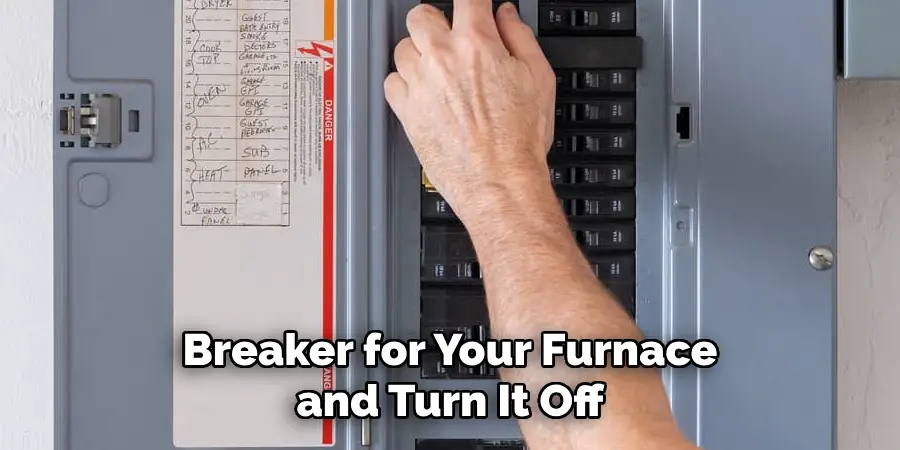
Before beginning any maintenance, safety should always come first. Locate the power switch or circuit breaker for your furnace and turn it off. This crucial step helps prevent any accidental starts while you are working on the drain, ensuring your safety and protecting your system from potential damage.
Step 2: Locate the Furnace Drain
The next step is to find where your furnace drain is situated. Often, it is a PVC pipe that exits the furnace and leads to a drain in the floor or a utility sink. In some cases, the drain may also run outside the house. If you need more clarification, refer to your furnace’s manual for guidance on locating the drain. Once identified, you can proceed to inspect it for any visible signs of clogging or damage.
Step 3: Check for Visible Blockages
With the furnace turned off and the drain located, closely inspect the entrance of the drain for any visible blockages. Sometimes, the clog might be due to obvious obstructions such as leaves, debris, or ice. If you spot any blockages, carefully remove them. Use rubber gloves to protect your hands and dispose of the debris properly. If the obstruction is not visible or too deep down, you’ll need to use other methods to clear the drain.
Step 4: Use a Wet/Dry Vacuum
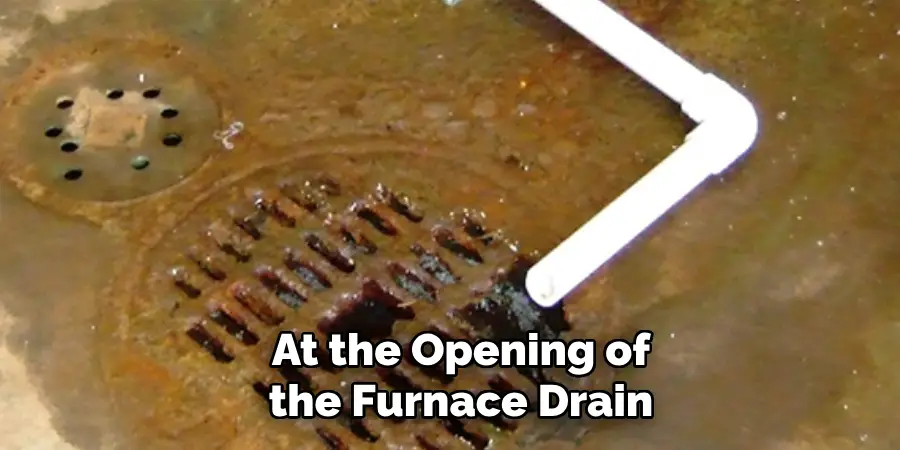
With your safety gear on, position the wet/dry vacuum at the opening of the furnace drain. Ensure the vacuum is set to a wet setting if it has the option. Attach a narrow nozzle to increase the suction power, making removing any clogs located further down the drain easier.
Turn on the vacuum and let it run for a few minutes to suck out the clog. This method is often effective for removing blockages caused by dirt, debris, or small objects.
Step 5: Flush with White Vinegar or Bleach
After using the wet/dry vacuum, if the clog persists or you suspect there might still be residue within the drain, it’s advisable to use a cleaning solution. White vinegar is a great, eco-friendly option that can help dissolve any organic matter.
Alternatively, bleach can be used, but proper ventilation and safety precautions must be ensured. Pour half a cup of your chosen solution directly into the furnace drain. Allow it to sit for 15 to 30 minutes to break down any remaining debris or algae.
After the time has elapsed, flush the drain with warm water to clear out the solution and any loosened material. This step not only helps to eliminate the current blockage but can also prevent future clogs.
Step 6: Re-inspect the Drain
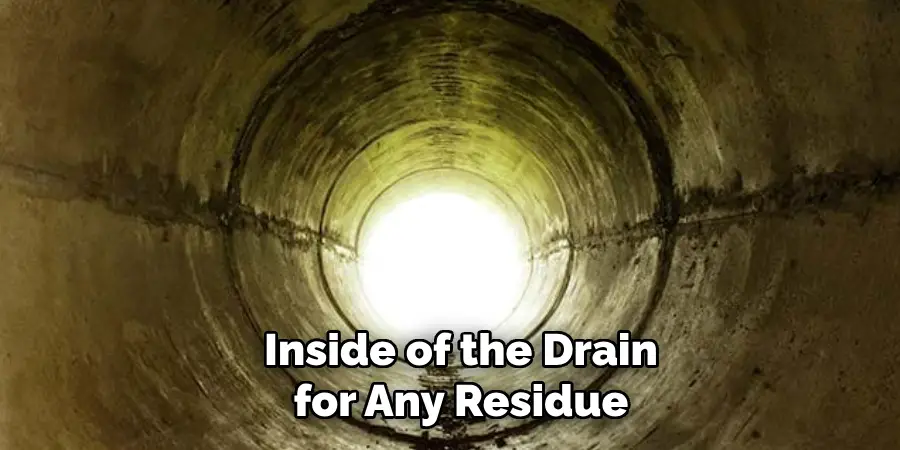
After flushing the drain with the cleaning solution and warm water, it’s important to re-inspect the area to ensure the blockage has been completely removed. If accessible, use a flashlight to visually examine the inside of the drain for any residue or debris that may still be present.
In some situations, a small hand mirror might help you see inside the drain more effectively. If the drain appears clear and water flows freely, the clog will likely be successfully removed. If you still notice a blockage, you may need to repeat the vacuuming and flushing process or proceed with additional measures.
Step 7: Test the Drain
Once you’ve ensured the drain is clear, it’s time to test its functionality. Slowly pour a gallon of water into the furnace drain to simulate normal water flow. Observe how the water drains; it should flow smoothly without any backup or slow draining.
This test will help confirm that the clog has been fully removed and that the drain is functioning as it should. If you encounter any issues during this test, you may need to reassess and possibly repeat some of the previous steps to ensure the blockage is entirely cleared.
Step 8: Clean Up
Following the successful unclogging and testing of your furnace drain, cleaning up your work area is essential. Remove any tools, gloves, and containers used during the process, and properly dispose of any debris or cleaning solutions according to local regulations.
Ensure the area around the furnace is dry and free from any materials that could pose a safety hazard. This final step ensures your work area remains safe and tidy and signifies the completion of your maintenance task, allowing you to turn your furnace back on with confidence.
Step 9: Monitor Furnace Performance
After turning your furnace back on, monitoring its performance closely for the next few days is important. Pay attention to any unusual noises, water leaks, or inconsistencies in heating. These signs indicate that either the drain is getting clogged again or there are other issues with the furnace that need attention.
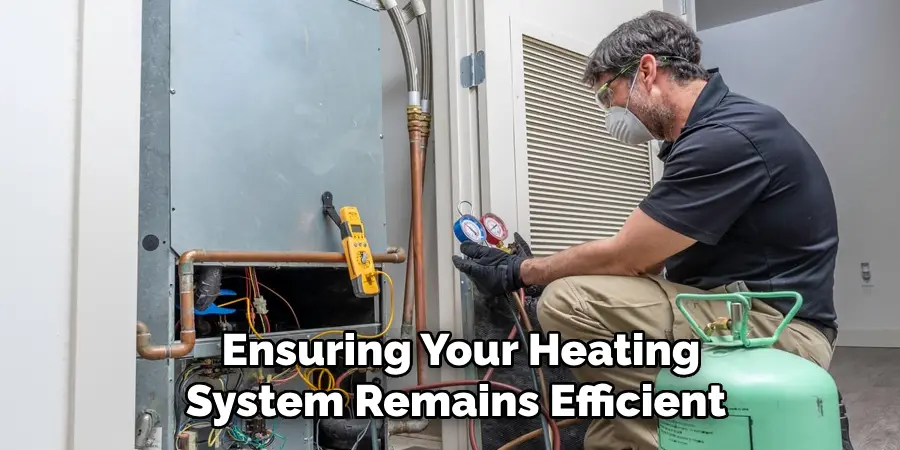
Regular monitoring helps catch any new problems early, ensuring your heating system remains efficient and operational. Keep an eye on the drain area too, checking for water pooling or slow drainage that could signify a recurring clog.
Step 10: Schedule Regular Maintenance
The final step in maintaining a healthy furnace drain is to establish a routine maintenance schedule. Regular checks and cleaning of the furnace and its components, including the drain, can prevent future clogs and ensure your heating system operates efficiently. Consider setting reminders to inspect your furnace drain every few months, especially before the start of the heating season.
Professional HVAC service is also recommended annually to assess and maintain the overall health of your furnace system. This proactive approach will help extend the life of your furnace, improve its performance, and save you from unexpected repairs or inefficiencies.
By following these steps and making furnace drain maintenance a part of your regular home maintenance routine, you can ensure that your heating system runs smoothly and efficiently for years to come.
5 Additional Tips and Tricks
- Preventive Measures: Regularly check the area around your furnace for any signs of water leakage or pooling, which may indicate a beginning clog. Taking preemptive actions can save you from more complex cleaning tasks later on.
- Use a Plumbing Snake: Consider using a plumbing snake for tougher clogs that are not resolved with a vacuum or flushing. This tool can help you reach deeper into the drain to dislodge stubborn blockages.
- Check and Clean Air Filters: Dirty air filters can cause numerous furnace problems, including affecting the drain line. Regularly cleaning or replacing your furnace’s air filters can prevent debris from entering the drain.
- Inspect the Drain Line for Damage: Sometimes, the issue might not just be a clog but also cracks or damage to the drain line itself. Periodically inspect the line for any signs of wear and tear and replace if necessary.
- Professional Help: If you’ve tried all DIY methods without success, it might be time to call in a professional HVAC technician. They have specialized tools and expertise to diagnose and solve furnace drain issues effectively.
With these tips and tricks, you can confidently maintain your furnace drain and prevent any clogs or issues that may disrupt your heating system.
5 Things You Should Avoid When Unclogging a Furnace Drain
- Avoid Harsh Chemicals: Chemical drain cleaners might seem like a quick fix, but they can cause corrosion or damage to your furnace drain lines over time. Instead, rely on more gentle cleaning solutions like vinegar and baking soda.
- Do Not Ignore Safety Precautions: Always turn off your furnace and wear protective gloves and eyewear when attempting to unclog the drain. Electrical components and contaminated water can pose serious risks.
- Don’t Use Excessive Force: When using a plumbing snake or other tools to clear the blockage, be cautious not to apply too much force. This can damage the pipes or the furnace itself, leading to more significant problems.
- Avoid Neglecting Regular Maintenance: Don’t wait for a clog to occur. Regularly inspecting and cleaning your furnace drain as part of your routine maintenance can prevent clogs from happening in the first place.
- Don’t Attempt Complex Repairs Yourself: If the clog persists after you’ve tried basic unclogging methods, don’t attempt more complex repairs on your own. It’s better to consult a professional HVAC technician to avoid causing further damage to your heating system.
By avoiding these mistakes, you can effectively maintain your furnace drain and prevent any potential problems.
Some Frequently Asked Questions
1. Where is the Furnace Drain Located?
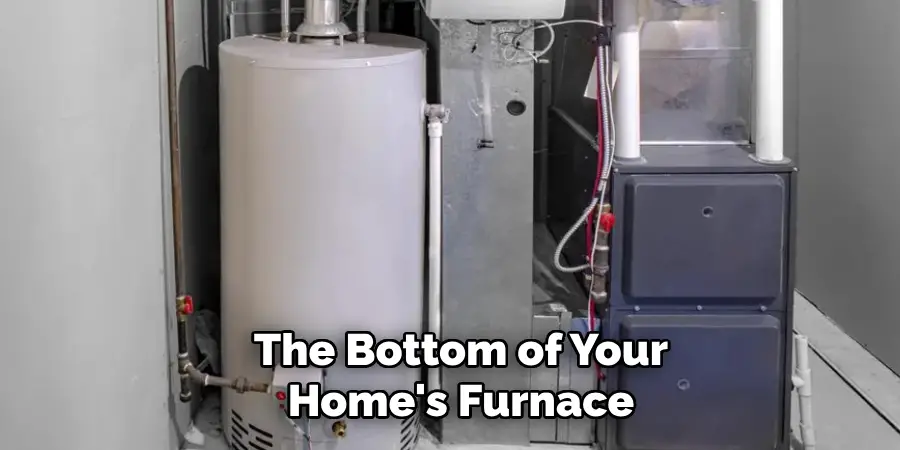
The furnace drain is typically located near the bottom of your home’s furnace and connects to your home’s main drainage system. Its exact location may vary depending on your furnace type, but it is usually easily accessible. If you need help finding your furnace drain, consult your furnace manual or contact a professional HVAC technician for assistance.
Another clue to locating the furnace drain is to follow the PVC pipe coming out of your furnace. This pipe carries condensate from your furnace and connects to the main drain line, usually near your home’s sewage or sump pump system.
2. What is a Furnace Drain Trap?
A furnace drain trap is a U-shaped pipe or fitting that is installed in the drainage system to prevent sewer gases from entering your home. It traps water inside, creating a barrier between your furnace and the sewer line.
This water also helps to catch any debris or sediment that may have entered the drain, preventing clogs further down the line. The trap should be checked regularly and cleaned if necessary to ensure proper functioning. If you notice any foul odors or slow drainage, it could be a sign that the furnace drain trap needs attention.
With these additional details and tips, you can confidently maintain your furnace drain and keep your heating system running smoothly all year long.
3. What Happens When Furnace Drain is Clogged?
When a furnace drain is clogged, several issues can arise that affect the performance and efficiency of your heating system. These include:
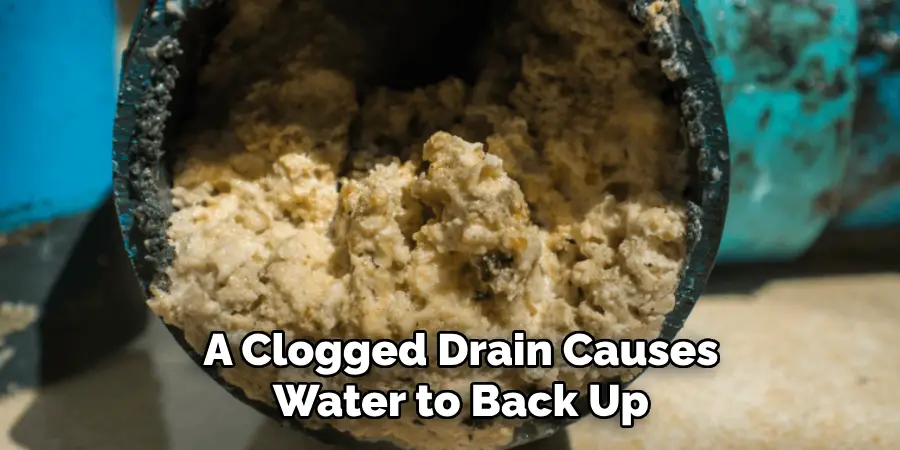
- Water Leakage: A clogged drain causes water to back up and overflow from the drain pan, leading to water leakage around the furnace area. This not only creates a mess but also poses potential safety hazards.
- Reduced Heating Efficiency: A clog in the furnace drain can disrupt proper airflow and heat transfer, reducing the efficiency of your heating system. This can lead to higher energy bills and discomfort inside your home.
- Water Damage: If left untreated for an extended period, a clogged furnace drain can cause significant water damage to your property. This includes structural damage, mold growth, and other issues that can be costly to repair.
- Malfunctioning Components: Clogs can also cause damage to various components of your heating system, such as the furnace blower or motor. This can lead to more complex repairs and affect the lifespan of your furnace.
- Fire Hazard: In extreme cases, a clogged furnace drain can pose a fire hazard if water leaks into the furnace’s electrical components. This can be dangerous for you and your property.
Addressing a clogged furnace drain promptly is essential to avoiding these potential consequences and keeping your heating system running smoothly.
4. How Do You Stop Your Main Drain From Clogging?
Preventing your main drain from clogging requires proactive measures and regular maintenance. Follow these simple yet effective strategies to keep your drainage system clear:
- Regular Cleaning: Regularly clean stoppers and drain strainers to remove hair, soap scum, and other debris. This easy task can prevent significant blockages in your pipes.
- Watch What Goes Down: Be mindful of what goes down your drains. Avoid flushing down items that don’t disintegrate, such as feminine hygiene products, wipes (even those labeled “flushable”), and excessive amounts of toilet paper. In the kitchen, avoid disposing of grease, coffee grounds, and food scraps down the sink.
- Use Baking Soda and Vinegar: Monthly, flush your drains with a mixture of baking soda and vinegar, followed by hot water. This natural remedy helps to keep your drains clean and free from odors without the harsh effects of chemical cleaners.
- Hot Water Flush: Make it a habit to flush your drains with hot water weekly. The hot water helps dissolve any fatty residues that may build up in your kitchen sink drain.
- Professional Maintenance: Consider scheduling an annual inspection and cleaning of your main drain by a professional plumber. They can help identify and resolve any potential issues before they lead to a clog.
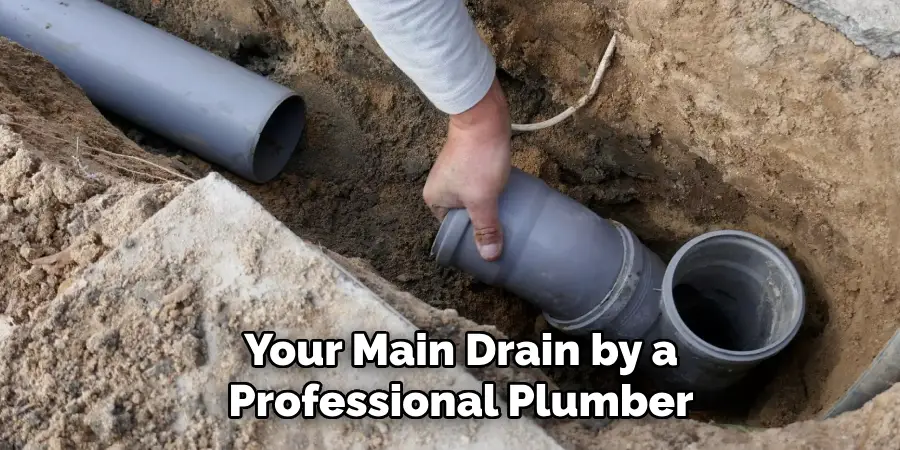
By incorporating these steps into your regular maintenance routine, you can significantly reduce the risk of clogs and maintain a healthy, functioning main drain system in your home.
Conclusion
How to unclog a furnace drain might seem daunting, but with the right approach and tools, it can be a manageable process. From basic checks and simple unclogging methods like using a plunger or a vinegar and baking soda mixture to more advanced solutions such as using a plumber’s snake or seeking professional help, maintaining a clear furnace drain is essential for the efficiency and safety of your heating system.
Regular maintenance, being mindful of what goes down the drain, and promptly addressing any clogs are key steps to prevent damage and ensure that your furnace operates smoothly throughout the year.
Remember, while some clogs can be cleared with DIY methods, don’t hesitate to call a professional for complex issues to avoid causing further damage to your system.
You Can heck it Out to Clean Furnace Condensate Drain Line

